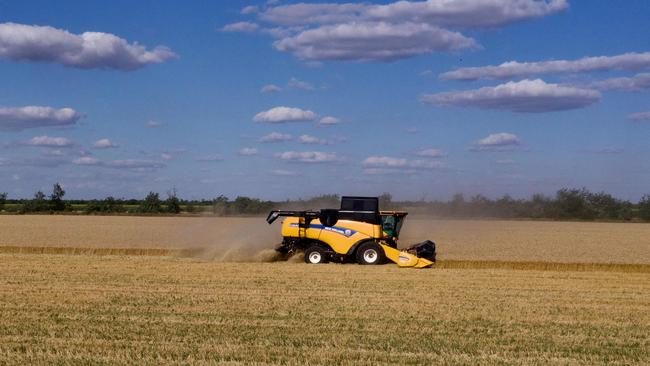Hay, grain talk: Lentil production hits record heights
As plans for sowing get well underway, hay is coming back into the cropping rotation. Plus, new figures show lentil production hitting an all-time high.
HAY TALK:
As plans for sowing are well underway, growers are turning to hay as a viable cropping rotation.
Cereal and vetch hay can be excellent risk management tools for grain growers looking to avoid adverse growing seasons and downturns in the corn and soybean dominated grain markets.

The shortage of protein hay is entirely due to the poor vetch production in 2022. Some growers chose to brown manure vetch crops early, hoping the rains would settle prior to baling. When it became obvious that the rains were not letting up, some growers retained their crops for harvest as seed.
Given the recent flurry of activity in the vetch seed market, the vetch seed option is paying off for growers. Prices have been ranging from $450 ex farm for farmer dressed bulk in the SA mid north and central west of NSW to $1,200 a tonne for machine graded and tested popany in north central Victoria.
The purple flowered popany vetch appears to be a popular variety for the online listings due to its good yields, relatively soft seeded nature and favourable profile of disease resistance.
Dairy farmers will welcome the soft textured high protein hay for their milkers. If a dry finish to the season does eventuate, there could be a good availability for exporters to start a reasonable vetch hay export program.
A shortage of marketable hay has seen hay prices rise. Despite the lower quality, the exceptional yields have helped lift hay returns back into contention for the 2023/24 season program.
Export cereal hay prices have been supported by some high global prices triggered by price wars between US hay exporters.
This time last year new crop canola prices were $973 a tonne on a Victorian port basis for delivery December 2022. Today new crop canola prices are 33 per cent lower at $642 a tonne.
This season, the talk of another El Nino has buyers a bit jumpy. But this issue has been sidelined, temporarily at least, by the impressive rains that fell over NSW last week.
The month to date rainfall shows the eastern half of the state has received at least 25mm and its forecast to be repeated again this week.
This will allow for the early establishment of dual purpose cereal and fodder crops and could ease potential grain and hay demand in the event of a dry spring.
GRAIN TALK:
Cereal grain markets have finally succumbed as fundamental and geopolitical issues push values lower.
The supplies of grain that continue to flow late in the northern hemisphere marketing year especially from Russia’s Black Sea ports has been relentless.
These have been eliminating demand and price spikes.
The weather in the EU and Russia is also encouraging for new crop grain production.
These ongoing forces were still pushing prices down last week until last week.
Last Friday a Russian newspaper quoted two unidentified sources who had attended a Russian Government meeting where bans on further sales of wheat and sunflower seed were discussed.
These reports were later denied by the Russian Government but they did suggest to Russian exporters that any price falls below the current levels would be below the grower’s cost of production.
Some are sceptical that Russia has much more grain to sell.
But given Russia is still the largest single exporter of wheat in the world at 21 per cent of
the global total and that many traders are short wheat futures in the EU, the market response to the news was swift.
Wheat futures on the Chicago exchange were up $14 a tonne on Friday alone but were $12 a tonne lower over the past week. On the Paris exchange, wheat futures were down $10 a tonne.
The fall in wheat prices in Australia has been more pronounced.

Wheat futures on the ASX exchange fell $20 a tonne last week.
Cash bids from exporters on a Geelong port basis are $14 a tonne lower for APW milling wheat.
Traders appear to be backing higher prices for wheat next season as the ASX futures for January delivery 2024 is sitting at $389 a tonne, $8 higher than the May 2023 contract.
The 25mm of rain that fell in the eastern half of NSW last week, and the further follow up forecast for another 25 to 50 in the same region this week, have put a dampener on the dry season talk that has been supporting prices.
The price rally in lentils continues with nugget types quoted by brokers this week at $865 a tonne delivered to Melbourne, up $20 a tonne. Since the mid-February price of $755 a tonne, nugget lentils have increased $110 a tonne.
Lentil growers are thought to be holding stocks and are yet to sell the majority of their production.
According to the national forecaster ABARES, lentil production hit a record this year at 1.4 million tonnes.
The production of 900,000 tonnes in South Australia and 475,000 tonnes in Victoria will keep exporters busy.
Some exporters dismiss the price increases as based on higher prices being paid by the importers in the subcontinent but there are plenty of shipments happening.
A 15,000 shipment of lentils is due to load in Portland this week.
Although there is no breakdown of crop type, container exports of pulses from the Port of Melbourne to Sri Lanka and Bangladesh were up strongly in February.




